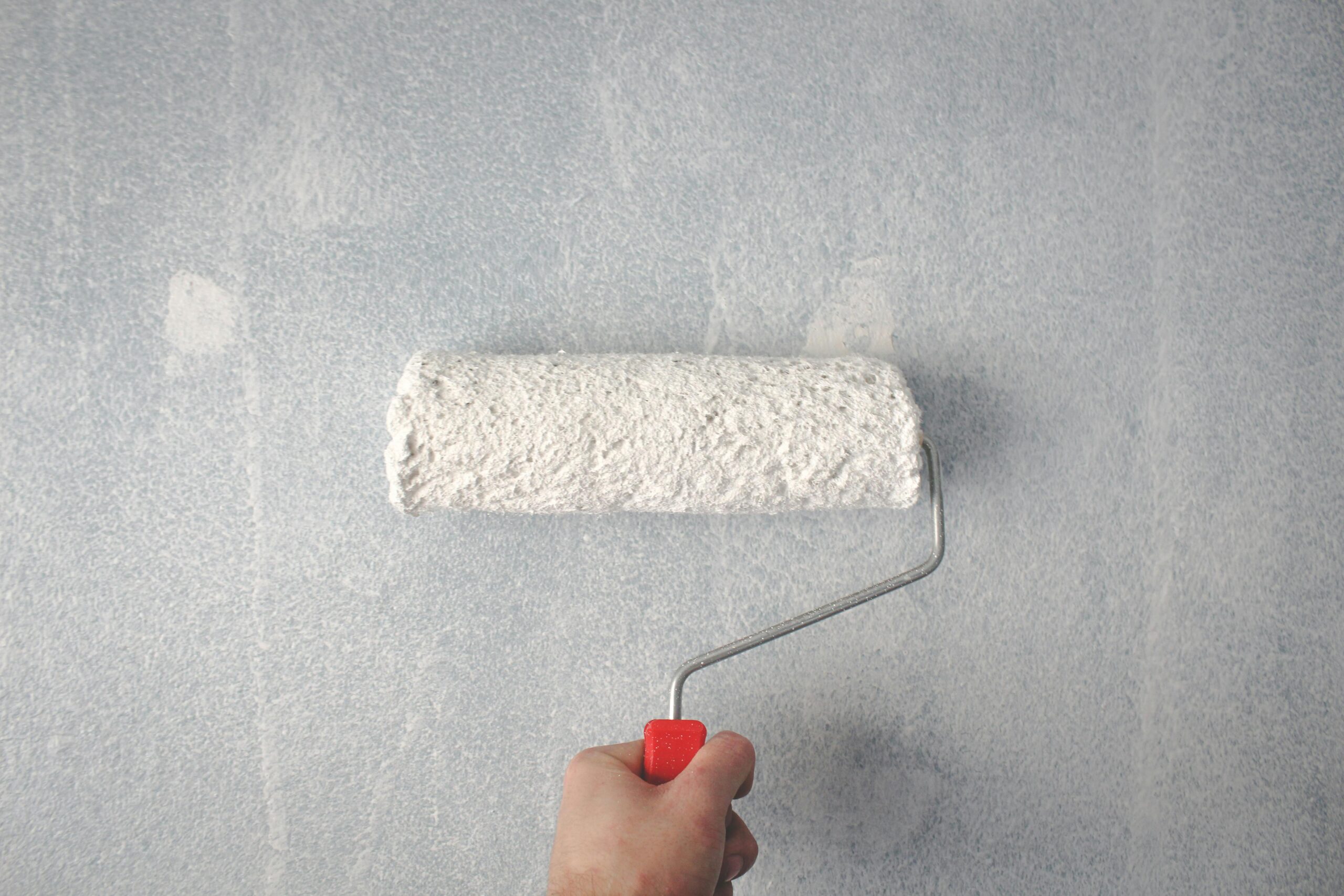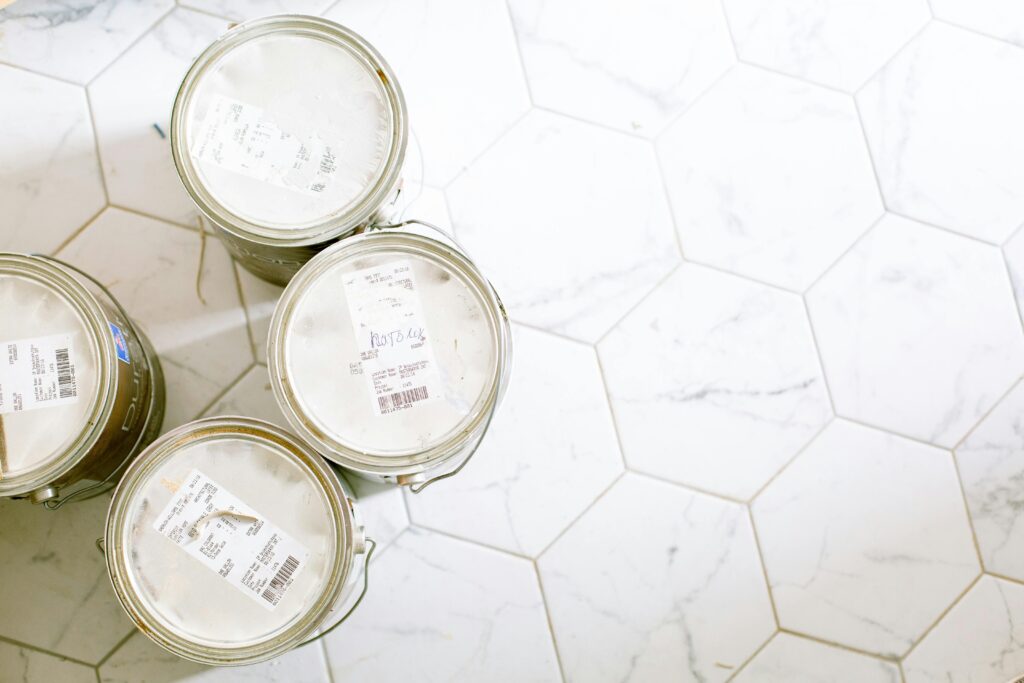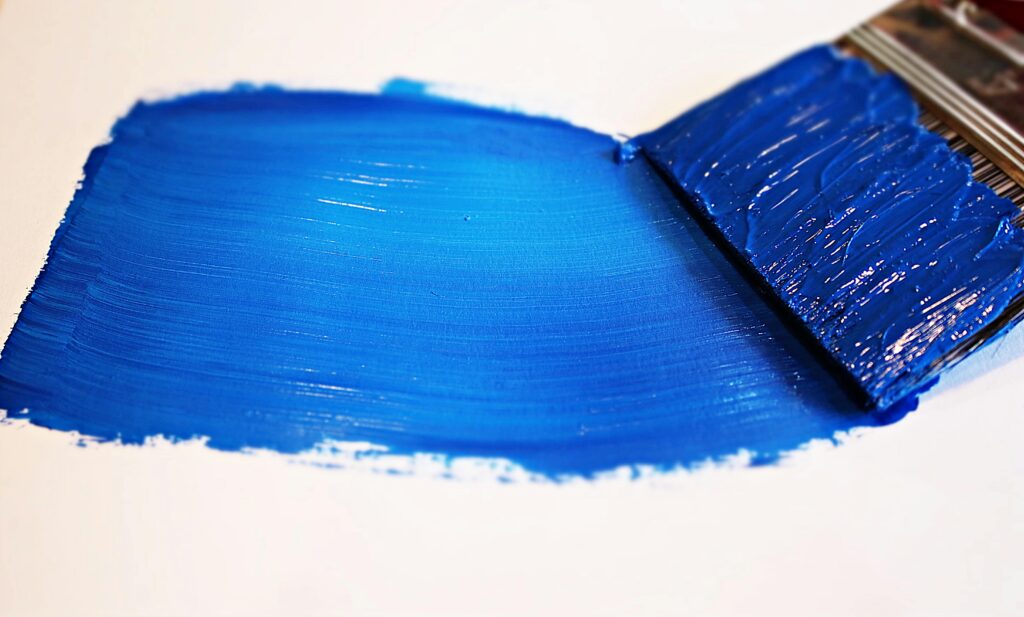New Solar Paint Turns Sunlight and Air Into Energy and It Can Be Applied to Nearly Any Surface

Picture this: the side of a building quietly pulling power from the sun. A highway barrier generating electricity as cars zip past. Your house, your very walls humming with invisible energy, not because of panels or wires, but because of the paint itself. Sounds like science fiction? It’s not. It’s solar paint – a revolutionary coating that doesn’t just color your world, it powers it.
Today, our energy grid still leans heavily on systems that dig, drill, and deplete. But nature whispers a different answer every time sunlight touches a surface. And now, scientists are finding ways to listen not with bulky equipment, but with layers of liquid innovation.
Solar paint is turning the ordinary into opportunity. Walls, roofs, vehicles, even park benches no longer just background noise in our built environment, but potential contributors to a cleaner, self-sustaining world.
So how does this work? And how close are we to living in cities that literally glow with the energy they generate?
What Is Solar Paint and How Does It Work?
At first glance, solar paint seems almost too simple to be revolutionary, a liquid coating, brushed or sprayed on like any other. But within that layer lies a silent engine: technology capable of turning sunlight and even air into usable energy. It’s solar power made subtle, elegant, and astonishingly versatile.
Solar paint, also known as photovoltaic paint, contains microscopic semiconducting particles that absorb sunlight. When light hits these particles, it excites their electrons triggering the same basic principle that powers traditional solar panels. This movement of electrons creates a flow of electricity, which can then be captured and used to power devices, buildings, or even vehicles.
Purdue University researchers have developed the world's whitest paint, reflecting 98.1% of sunlight and cooling surfaces by up to 8°F during the day. This innovation could reduce the need for air conditioning, offering a sustainable solution to combat global warming.
— Interesting Engineering (@IntEngineering) May 30, 2025
For more… pic.twitter.com/4dJGwwA2ot
What sets this innovation apart is not just its form, but its flexibility. Unlike bulky solar panels, solar paint can be applied to almost any surface – flat, curved, vertical, or irregular. It conforms to the built environment rather than requiring special installation. The potential impact is enormous: homes, offices, fences, cars, even bridges and tunnels could become quiet generators of clean energy, simply by being painted.
There isn’t just one kind of solar paint, but rather a growing family of technologies, each offering its own unique pathway to energy conversion. Some of the most promising include:
1. Hydrogen-Generating Solar Paint
Developed by researchers at RMIT University in Australia, this version of solar paint doesn’t just generate electricity it creates clean fuel. By absorbing moisture from the air (even in dry climates), it uses sunlight to split water vapor into hydrogen and oxygen. The hydrogen can then be stored and used as a sustainable energy source.
The magic lies in a compound called synthetic molybdenum-sulfide, which acts like a supercharged version of silica gel absorbing moisture and then teaming up with sunlight to create usable fuel.
2. Quantum Dot Solar Paint
At the University of Toronto and the National Renewable Energy Laboratory (NREL), scientists are perfecting paint made with quantum dots minuscule semiconducting crystals that can be tuned to absorb specific parts of the light spectrum.
This technology, sometimes called photovoltaic paint, is efficient, versatile, and inexpensive to produce. Quantum dot paint has already reached efficiency levels of over 13%, and with further refinement, it could rival traditional solar panels all while being applied like regular paint.
3. Perovskite Solar Paint
Perhaps the most promising of all, perovskite-based solar paint uses a crystalline structure that’s highly effective at absorbing light. These materials, named after mineralogist Lev Perovski, can be transformed into liquid form and sprayed onto surfaces earning them the nickname spray-on solar cells.
In less than a decade, perovskite solar paint has surged from 3% to over 20% efficiency in lab settings, a staggering leap that has caught the attention of researchers and investors alike.
What truly sets solar paint apart is its adaptability. It’s not confined to flat, sun-facing panels. It can wrap around curves, coat irregular shapes, and blend seamlessly into surfaces that were once overlooked in the renewable energy equation – fences, bridges, vehicles, and even garden sheds.
Where We Are Now

Solar paint may sound like a marvel of tomorrow, but pieces of that future are already being tested today. Around the world, scientists, engineers, and architects are turning this once-hypothetical concept into a functional, field-tested technology. And while you won’t find solar paint in your local hardware store just yet, the groundwork for its arrival is being laid brushstroke by brushstroke.
Global Breakthroughs and Field Tests
The journey from lab to landscape is well underway. At the Royal Melbourne Institute of Technology (RMIT), researchers shook the clean energy world when they developed a hydrogen-generating solar paint that can extract fuel from thin air literally. Their formulation works even in arid climates by absorbing water vapor and using sunlight to split it into hydrogen and oxygen, creating fuel from the atmosphere itself.
Across the Pacific, the U.S. National Renewable Energy Laboratory (NREL) has been refining quantum dot solar paint formulations. Their latest models can harvest more of the sunlight spectrum, increasing power output and making these microscopic semiconductors serious contenders for real-world application.
And in Southeast Asia, field trials in Singapore have shown that solar paint can maintain power production even during overcast days. Unlike traditional solar panels that thrive only under direct sunlight, some paint formulations can draw energy from diffused light giving them a clear advantage in cloudy or shaded environments.
Testing Infrastructure, One Surface at a Time
Pilot programs are cropping up globally, transforming walls and prototypes into testbeds for solar innovation:
- In Japan, office buildings are experimenting with solar paint on their exterior walls, turning otherwise passive facades into mini power stations.
- European automakers are testing paint on vehicle exteriors, exploring its potential to extend electric vehicle (EV) range by passively charging during sunlight exposure.
- Infrastructure trials are underway on bridges, tunnels, and even sound barriers along highways all with the goal of tapping into previously unusable surface areas.
Challenges on the Path to Scale
Despite the exciting progress, solar paint still faces hurdles before it can enter widespread commercial use. Key challenges include:
- Efficiency: While some formulations have crossed the 10% efficiency threshold, most are still less efficient than traditional solar panels.
- Durability: Paint must withstand extreme weather, UV exposure, and time. Protective layers are being tested, but long-term resilience remains a work in progress.
- Scalability: Transitioning from small lab batches to industrial-scale manufacturing isn’t as simple as hitting “print.” It involves sourcing materials sustainably, maintaining performance consistency, and minimizing production costs.
Efforts are underway to address these issues:
- New carbon-based additives are being tested to improve conductivity and boost efficiency.
- Spray-application techniques are reducing labor and cost barriers.
- Certification programs are in development to ensure safe, standardized application and installation.
When Will It Be Available?
Most experts estimate that commercial solar paint could begin appearing in niche markets within 3 to 5 years, particularly in commercial and industrial settings. Residential applications may follow soon after, depending on how well the technology scales and adapts to various environmental conditions.
The Environmental and Economic Impact

At a time when climate warnings are becoming harder to ignore and energy costs are climbing, solar paint offers something rare: a solution that’s both environmentally sound and economically promising. It’s not just a clean energy innovation it’s a redefinition of how we build, power, and sustain the spaces we inhabit.
A Smaller Carbon Footprint From the Start
Unlike traditional silicon solar panels, which require high-temperature manufacturing and resource-intensive materials like quartz and rare metals, solar paint can be produced using simpler processes and more abundant components. The result? A significantly lower carbon footprint right out of the gate.
Initial studies suggest that producing solar paint creates 60–70% less carbon emissions than manufacturing equivalent-output solar panels. And in ideal conditions, the carbon payback period the time it takes for the paint to “offset” the emissions created during its production could be as short as three months.
Sustainable by Design
Today’s solar paint formulations aim to be as eco-conscious in creation as they are in function. Researchers and developers are incorporating:
- Water-based solvents in place of harsh chemicals,
- Recycled or recyclable materials, including reused industrial waste,
- Low-energy production methods that reduce strain on manufacturing infrastructure.
And when its life cycle ends? Solar paint doesn’t need to become waste. Some versions are being designed for easy removal and material recovery. Scientists have already developed methods to extract and reuse valuable elements like quantum dots and perovskite compounds, which means less raw material demand and more circular economy potential.
Energy Without Expansion
Solar paint’s power lies not just in what it does but in what it frees us from. Traditional energy infrastructure often requires additional land, large installations, and long-distance transmission. In contrast, solar paint allows us to generate energy on surfaces we already use.
- A painted wall could generate electricity for 15 to 20 years.
- Surfaces once seen as aesthetic or structural become energy assets.
- No new space, no new grid. Just a smarter use of what’s already there.
And the benefits extend to cities. When solar paint is applied to widespread urban infrastructure, it can help reduce the heat island effect, power local systems, and even, in some cases, clean the air. Experimental formulations have shown the ability to break down air pollutants like nitrogen oxides and VOCs, turning painted walls into passive air purifiers.
Affordability and Access
From an economic standpoint, solar paint promises greater accessibility especially in places where traditional solar panels are impractical due to cost, structural limitations, or aesthetics. Because it can be applied using conventional tools like sprayers or rollers, it cuts down on the need for complex installations and specialized labor.
While current solar panels remain more efficient and widely available, solar paint:
- Has lower upfront production and application costs,
- May extend the power output of existing solar setups, and
- Holds potential for mass adoption, particularly in the developing world, where flexibility and affordability are crucial.
As manufacturing methods improve, experts expect prices to drop even further possibly making it one of the most cost-effective solar technologies on the market in the coming decade.
Solar Paint vs. Traditional Solar Panels

Innovation isn’t always about replacing what works sometimes, it’s about expanding what’s possible. That’s exactly where solar paint fits in. While traditional solar panels have become a cornerstone of clean energy, solar paint offers a new way to think about energy generation: not as an add-on, but as an integration. Still, the natural question arises how do these two technologies really compare? Let’s break it down.
Efficiency: The Power Gap
Today’s silicon solar panels are undisputed leaders in efficiency, typically converting 15% to 23% of sunlight into usable electricity. Premium models can exceed that range under ideal conditions.
By contrast, solar paint is still in its early efficiency phase. Most formulations currently convert between 3% to 12%, depending on the type with quantum dot and perovskite paints showing the most promise. Some lab tests have even achieved 13.4% efficiency with quantum dots, and perovskites are closing in fast on panel-level performance.
But while solar panels win in raw power output, solar paint’s strength lies in where it can go on surfaces where panels simply can’t.
Cost: Complexity vs. Simplicity
Solar panel systems have become increasingly affordable in recent years, thanks to mass production and federal incentives. However, they still require:
- Custom mounting hardware
- Professional installation
- Permits and inspections
Solar paint, on the other hand, offers the promise of lower material and installation costs, especially for large or irregular surfaces. Once commercially available, it could be applied like traditional paint with minimal disruption and less labor.
Application: Versatility vs. Specialization
Solar panels are excellent on angled rooftops, open land, and optimized installations. But they’re limited by:
- Shape constraints
- Aesthetic concerns
- Surface compatibility
Solar paint, by contrast, can be applied to:
- Curved or vertical surfaces
- Vehicles, bridges, and walls
- Urban infrastructure and off-grid locations
This opens up vast, previously untapped areas for solar generation think painted fences, concrete buildings, bus stops, and even shipping containers.
Durability: Proven vs. Promising
Solar panels have been stress-tested over decades. Many come with 25-year warranties and have demonstrated consistent performance through storms, snow, and heatwaves.
Solar paint is newer and still under active durability testing. Early versions show promise, with added weather-resistant coatings, UV protection, and even self-healing properties in development. But until large-scale trials prove its longevity, panels remain the more reliable long-term bet.
Future Vision: A Collaborative Canvas
The beauty of solar paint isn’t in competing with panels it’s in complementing them.
- Use panels for maximum efficiency on prime rooftop locations.
- Apply solar paint to facades, vertical walls, or surfaces where panels won’t fit.
- Blend the two into hybrid systems, where paint acts as an energy supplement, extending power generation into overlooked areas.
This multi-surface strategy could radically increase energy output from existing structures especially in cities, where space is tight but surfaces are everywhere.
The Vision Ahead

Close your eyes and imagine this: A city that breathes energy. Walls that don’t just block wind, but gather light. Bridges that hum with power. Cars that recharge while parked in the sun. This is the vision solar paint brings into focus a world where energy is not added on but woven in.
As solar paint matures, it opens the door to a radically reimagined energy landscape, where almost anything with a surface can contribute to the power grid.
Power-Generating Homes Without Panels
Forget bulky panels or rooftop limitations in the near future, entire homes could become power sources, thanks to solar paint:
- Exterior walls could generate electricity without changing the home’s appearance.
- Smart windows coated with transparent solar layers could admit light and harvest energy.
- Garages, fences, sheds, and roofs could become active players in a home’s energy independence.
Add in home batteries, and you’re not just consuming power you’re storing it, managing it, and sharing it.
Smarter, Greener Cities
Imagine walking through a city where every surface silently contributes to clean energy:
- Skyscrapers with painted facades that generate enough electricity to run their own lighting and elevators.
- Parking lots and garages painted with solar coatings to power EV charging stations.
- Street furniture benches, signs, and light poles all feeding small amounts of power into local microgrids.
These are not far-fetched ideas. Pilot projects are already underway in several global cities, testing how solar paint could integrate into urban infrastructure. The long-term potential? Energy-positive buildings and self-sustaining neighborhoods, all without adding a single new structure.

Revolutionizing Transportation
Solar paint is also poised to reshape how we power movement. Here’s how:
- Electric vehicles could be coated in solar paint, charging while sitting idle in sunlight extending their range without a plug.
- Cargo containers might power onboard refrigeration through solar-coated surfaces.
- Aircraft and trains could supplement power systems using solar-coated exteriors.
It’s a future where mobility and sustainability intersect on the surface of every vehicle turning downtime into uptime for clean power generation.
Next-Gen Innovations in the Works
The breakthroughs on the horizon make the future even more compelling:
- Self-healing paint formulations are being developed to repair minor scratches automatically.
- Color-changing solar paints will allow users to change the look of their buildings without sacrificing energy output.
- Built-in storage capabilities could allow the paint itself to store excess energy.
- Smart coatings are on the way embedded with sensors to monitor energy production, weather patterns, and even maintenance needs in real time.
These features will blur the line between technology, architecture, and nature creating living surfaces that respond to their environment while quietly powering it.
A Global Opportunity
Solar paint isn’t just about futuristic cities or high-tech homes it has the potential to bring clean energy to places where traditional infrastructure is out of reach:
- Remote villages where electricity is scarce could harness power from painted walls and schools.
- Emergency shelters and tents could be coated with solar paint to provide instant, mobile electricity.
- Developing nations could leapfrog centralized grids by tapping into decentralized, surface-based power.
The canvas is global. The brush? Innovation.
Power in Every Stroke
We often think of progress as something mechanical solar panels on rooftops, turbines in the distance, wires running underground. But what if progress was quiet? Invisible? What if it came in the form of something as familiar as paint?
That’s the shift solar paint invites us to make. It tells us that change doesn’t always have to be disruptive. Sometimes, the revolution is subtle layered into the walls we lean on, the cars we drive, the bridges we cross every day.
This isn’t just about technology. It’s about how we choose to see the world around us. That blank wall? It could be an energy source. That sunlit surface? A silent generator. Our environment so often passive, static now holds the potential to become an active partner in our survival.
But here’s the deeper question:
What else have we overlooked in plain sight?
Solar paint is more than an innovation it’s a metaphor. It asks us to rethink the ordinary. To see potential in the overlooked. To recognize that sustainable change doesn’t always come in grand gestures. Sometimes, it comes one layer at a time.
So as this technology inches closer to our homes, our cities, and our hands, the call isn’t just to adopt it but to imagine with it. To dream of a world not built with more, but made better with what we already have.
Loading...

